My short, overnight in Anchorage was a blast. I visited a local art store, ate some chowder and drank a cask IPA at a local brew house, and basked in the beginnings of the Iditarod celebrations at my hotel — the race starts this Saturday.
Too bad I will miss it, as I have made my way to Prudhoe Bay. I flew up with Fred Helsel and Bruce Edwardson, both Arctic logistics gurus from Sandia National Lab here to help me get set up and going. Our first stops after landing at the Deadhorse Airport were to pick up my equipment and run to the only hardware store in hundreds of miles. Naturally, I picked up some souvenirs from the store.

A patch, a magnet, and a sticker.
After an hour and a half drive to our destination, I settled in to the camp I am staying at, which by the way, is incredible! A gym, fully stocked mess hall (complete with a 24/7 pastry display), game room, and even a sauna. We even had steak night already. This is Arctic bourgeois living!

The drive to the camp. Pipelines and oil pads EVERYWHERE.
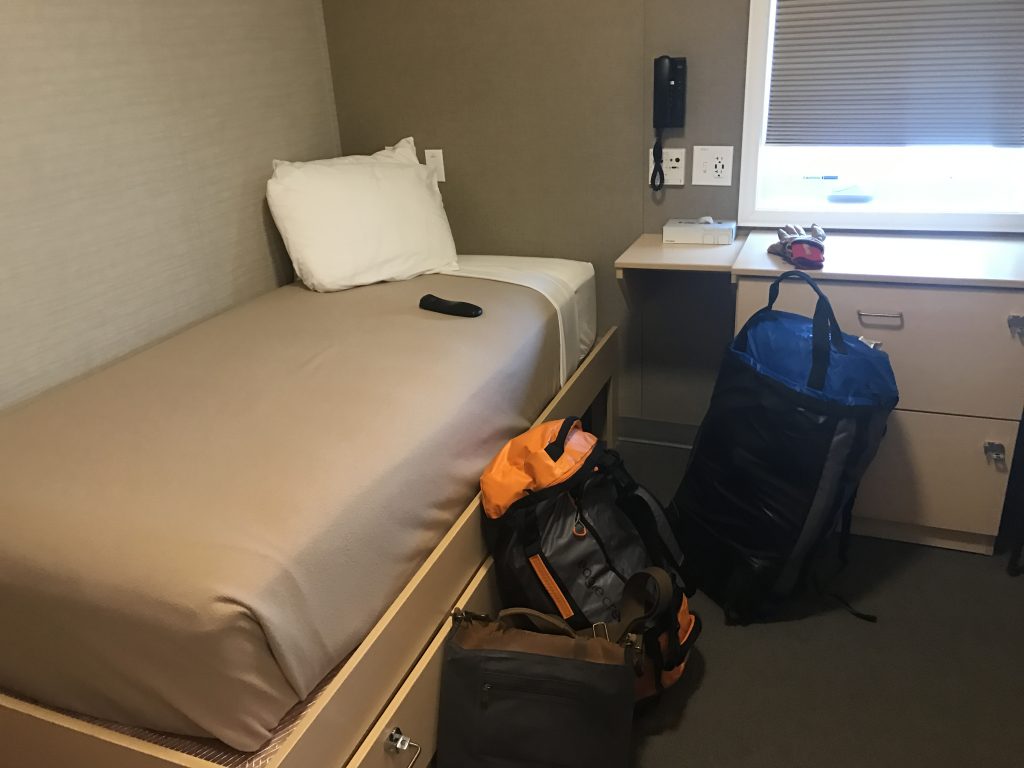
My room for the next few weeks, complete with a TV and hundreds of channels.
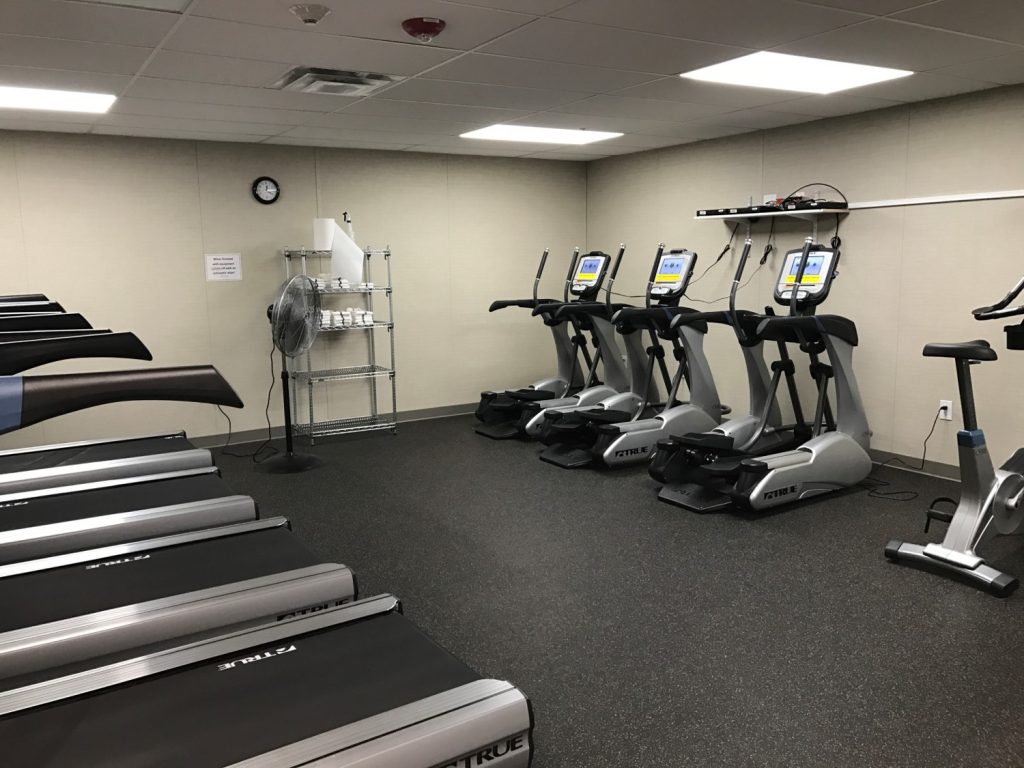
The cardio room. There is a separate weight room.
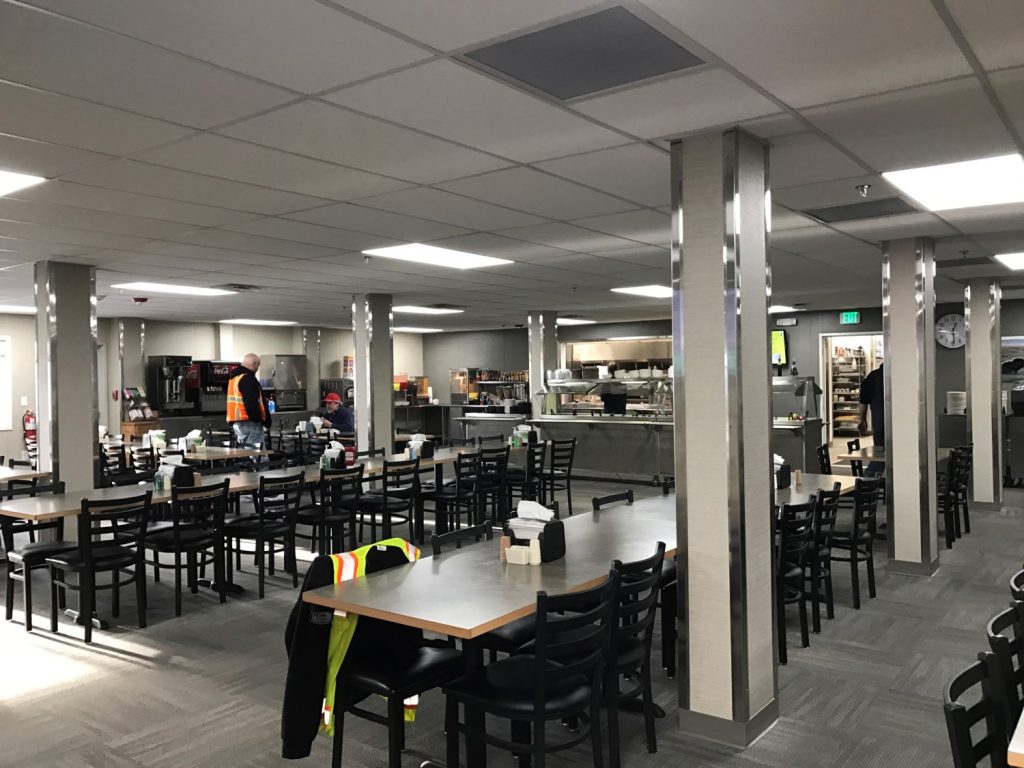
The mess hall, so much food!
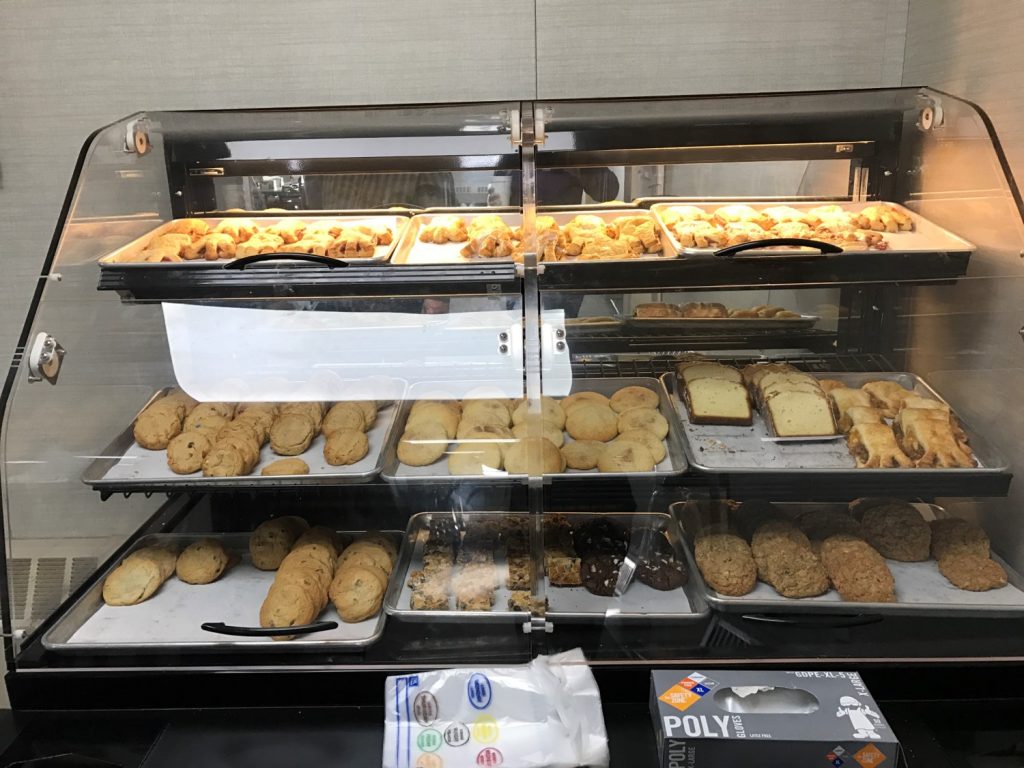
The wonderful but dangerous pastry display…

Oh yeah, welcomed to camp with a steak dinner 😀
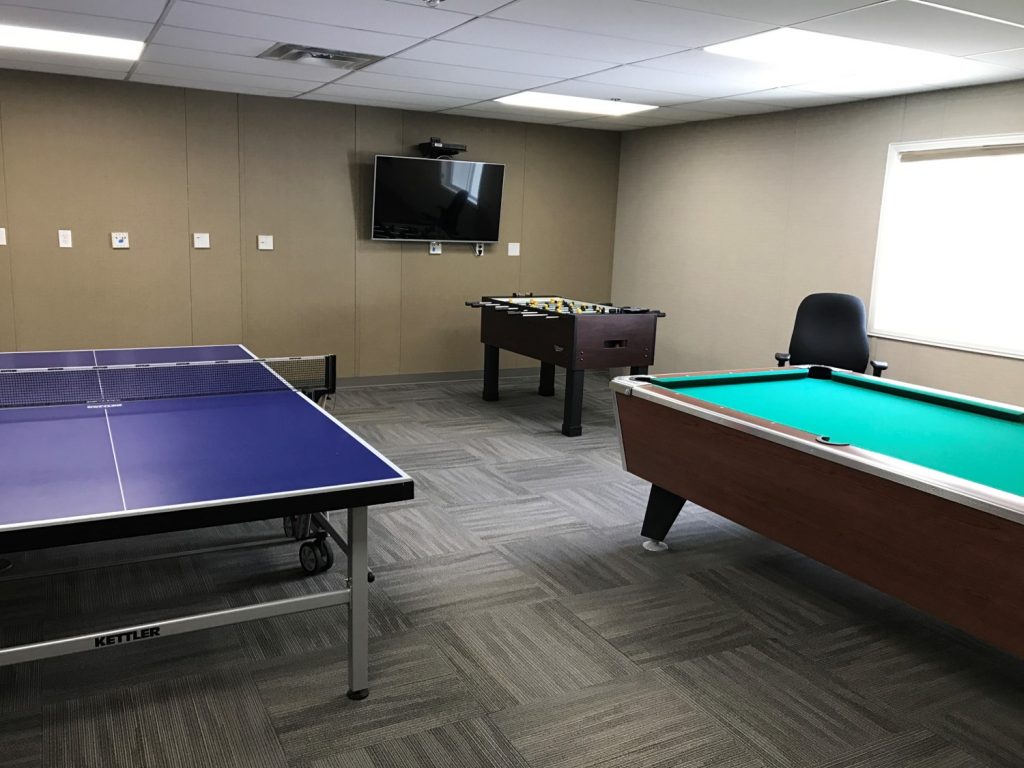
Last but certainly not least, the game room.
Next, I went through a series of safety briefings, including a 40 minute video on polar bear safety. We were able to start setting up the equipment at the site before calling it a night.
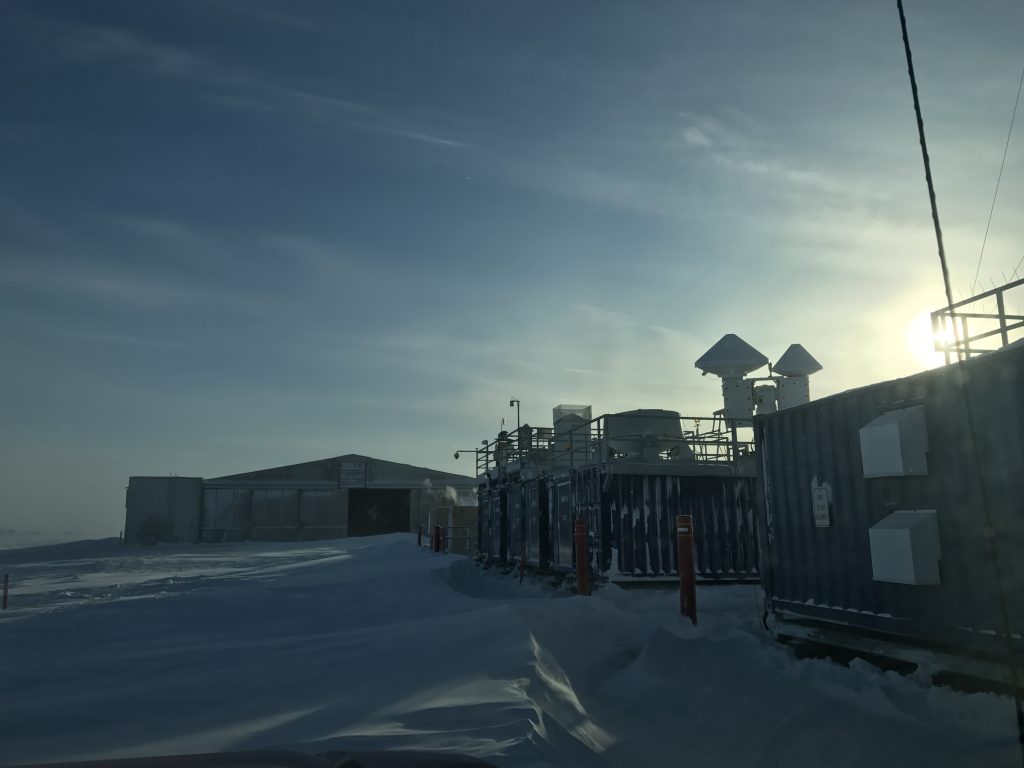
The site, Oliktok Point!
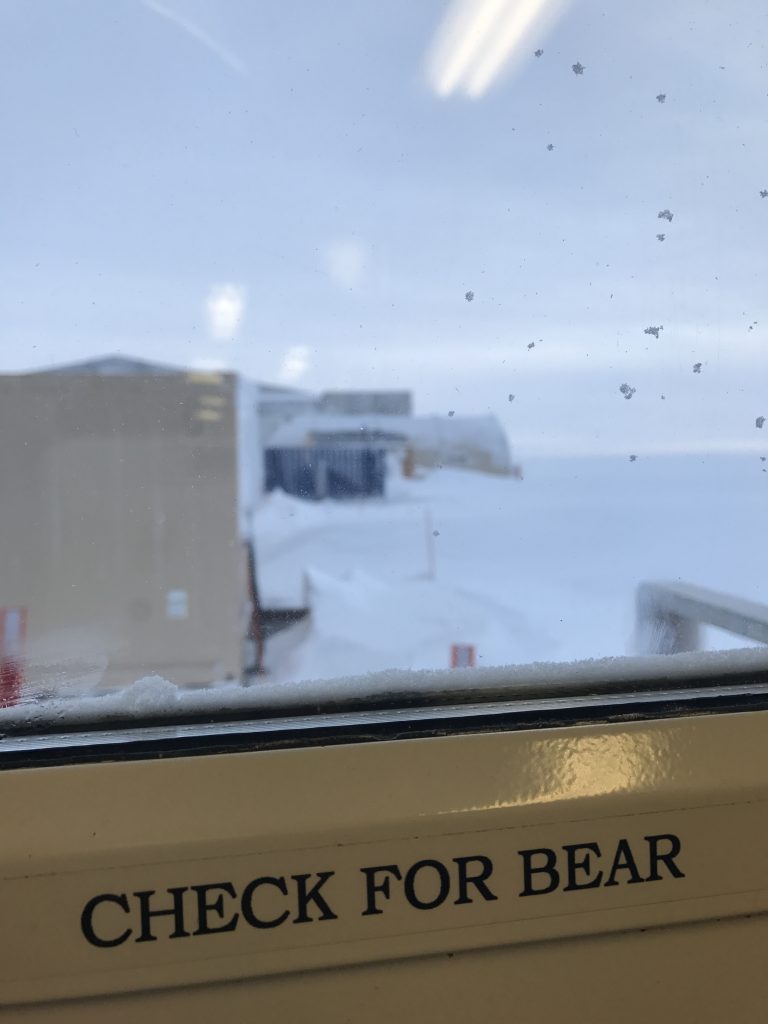
Yes, we have to check for polar bears every time we leave the site.
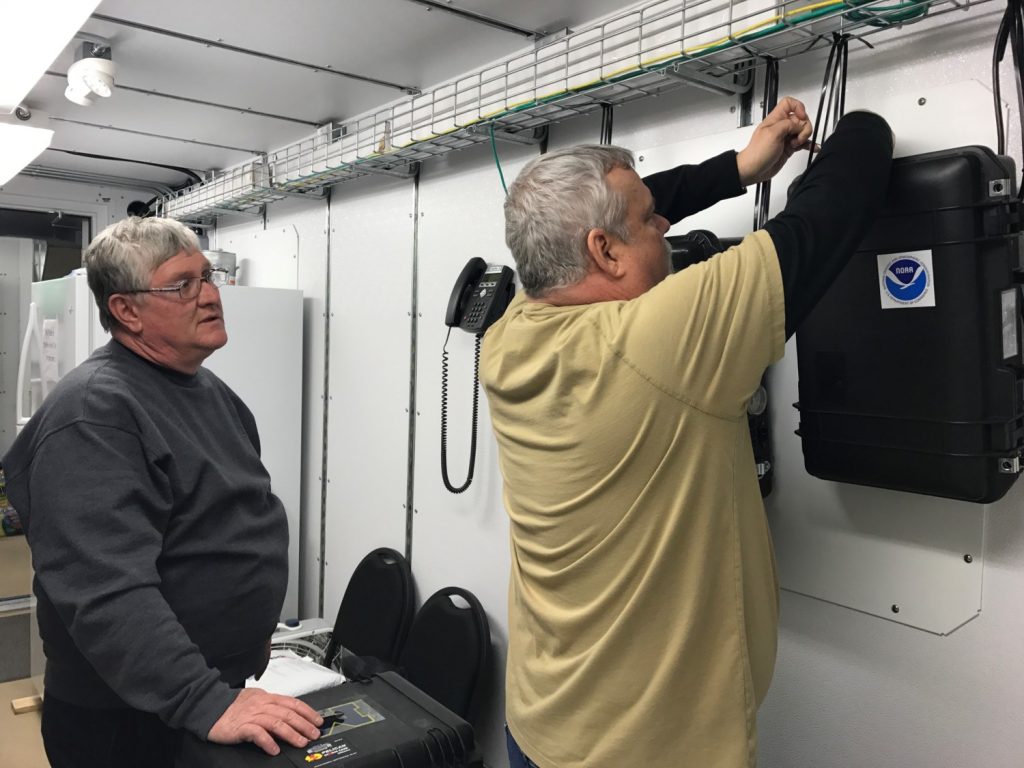
My saviors, Fred (left) and Bruce (right), helping me install the aerosol samplers.
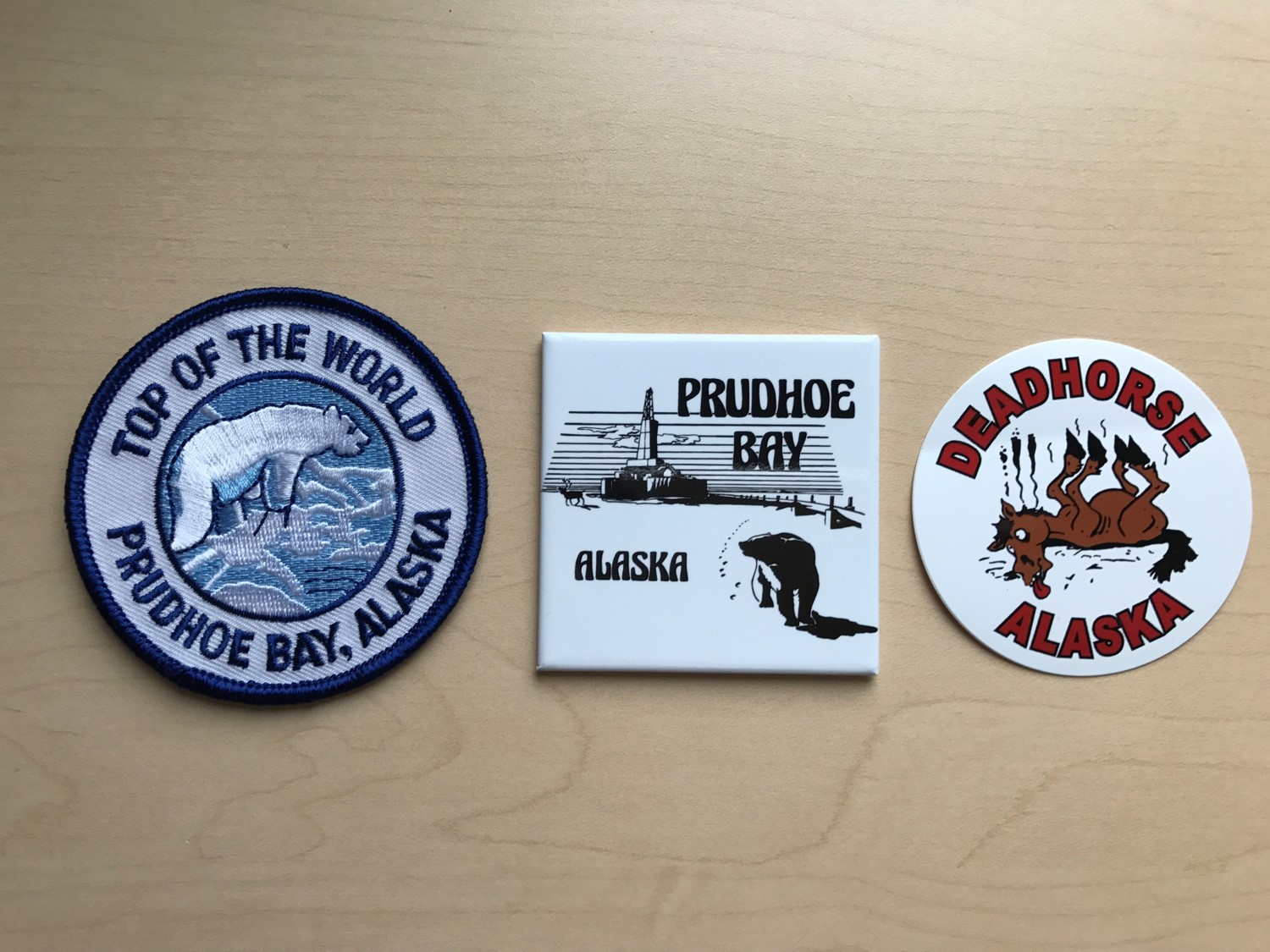

Jessie, my students are wondering if you have seen a polar bear or penguin yet. They also want to know how long you would be out there. They thought the food looked delicious.
Aunt Linda and her morning Science class.
Aunt Linda and morning science class, hello from the Arctic!
Glad you are able to check out my blog, that is awesome 😀 I am really excited to be up here. It is such a bizarre, but intriguing world. The food is delicious. I was shocked at how great the living conditions are up here, they are spoiling me.
I have not seen a polar bear yet, but I hope I do, from a safe distance of course. Interestingly, penguins do not live in the Arctic. They actually only live in the Antarctic, which is a little known fact. I have seen a fox though, they run around here everywhere and like to hideout in the hanger at our site where I am conducting my measurements. It is pretty rough out there so not a lot of animal sightings this time of year!
I will be out here until March 15. I would love to Skype with you guys at some point next week when I am at the site. I could to give you a virtual tour of the facility and some of the measurements that are being made there. The winds are too strong (about 40 mph) and visibility from the blowing snow is too poor for us to go to the site today. Since it is too risky, we had to stay at the camp today.
Let me know what day would work for you to Skype! As long as the weather affords safe conditions and as long as I am not having any complications with my equipment, I should be free to Skype. We are usually at the site from 7 AM to 5 PM Alaska Time.
Hope to talk to you soon,
Jessie
Jessie, would Friday be okay? We are in the process of taking our State tests on Tuesday and Thursday. Anytime after 12:30 is good (Central Time). Let me know if this works for you. Actually, 10:00 or later is good.
Aunt Linda
Hello Jessie,
It’s Uncle Jerry! I am with some young 6th grade scientists in my afternoon science class! They would like to ask you some questions.
1. Jonathan wants to know where else are you going to travel to?
2. Ta’Kai and Sainabu want to know does it get warm up there in the summer months?They know that the northern latitudes warm up in our summer months.
3. Venus wants to know how it feels to be way up there in such cold climate?
4. Carlton wants to know how many samples you collected so far?
5. How long does it take to get frostbite up there?
6. Brandon wants to know how strong are the heaters in your building?
7. Have you made friends up there?
And my question is: How small are the particles you are studying in your samples? Will they teach us anything about climate change?
Thanks so much and we look forward to hearing back!
Love Uncle Jerry and the scientists of Room 303!
Uncle Jerry and scientists of Room 303, hello from the Arctic!
I am more than happy to answer your questions, feel free to send more while I am up here to! I will be here until March 15.
1. Jonathan, I am here at Oliktok Point, Alaska for the next week. I have a few trips coming up this year, one to give a talk on my research in Switzerland, one to the Czech Republic for a conference called Arctic Summit Science Week, a workshop in Sweden this fall, and a ice breaker expedition this September where I’ll be on a huge boat that will leave from Alaska and get lodged into the ice near the North Pole. It should be pretty cool!
2. Ta’Kai and Sainabu, it does get warmer up here in the summer. The snow is gone, exposing the tundra, and some of the sea ice retreats exposing the Arctic Ocean surface. It is usually in the 50s in the summer, meaning a lot more animals come out, including caribou and mush oxen! The warmer weather also brings a lot, and I mean a lot of really big mosquitoes, ew.
3. Venus, it actually does not feel that bad. We have very special Arctic gear that we wear to keep warm. My Arctic parka feels like I am wearing 4 sleeping bags, it is so big and warm. I also have special boots, gloves, and pants. Even when it is -50 degrees, the gear keeps me nice and toasty warm 🙂
4. Carlton, I have collected 33 samples so far, and many more to come! If my sampler runs correctly, I should have over 100 samples after they are done running in May.
5. It can take minutes to get frostbite up here, especially when the winds are blowing strong and the temperatures are low. One day last week, it was almost -50 with the wind chill. I took my glove off to take a picture, and just from being exposed for less than a minute, my hand was beet red and hurt so bad! But it is not always that bad out, today, we only have 10 mph winds and it is about 20 degrees, it feels like a heat wave!!
6. Brandon, oh these heaters are pretty strong. At the site, heat is made from two HUGE generators. These generators also power the samplers and other atmospheric measurement instruments at the site.
7. I have made some friends! There are not a lot of people up here, mostly people who work for the oil companies. But I now know 4 of the technicians at the site and the site manager. They are great people, and very knowledgeable about working in such harsh conditions.
Uncle Jerry: The particles I am collecting are as small as 150 nanometers in diameter, meaning they are 0.00000590551 inches in diameter, so small! The larges ones I am collecting are 16 micrometers, or 0.000629921 inches. These size particles are very good at acting like seeds for cloud droplets and cloud ice to grow on, depending on their chemistry. Dust and bacteria are really good at forming ice in clouds, while sea salt and pollution can form liquid drops in clouds. In most of the clouds you see, each droplet or ice crystal is formed from an aerosol particle. Some of these aerosols can absorb or scatter sunlight on their own when they are in the atmosphere. As a result, aerosol particles can impact the amount of heat or sunlight at Earth’s surface, and can impact how, when, and where clouds rain or snow out. If we can understand where these aerosols come from, how many of them there are at any given time, and their impacts on sunlight and clouds, we can get a better grasp on climate change. But aerosols are one of the most uncertain aspects to climate change, which is why I am dedicating my career to understanding them better! If we know the what, where, how, and why of aerosols, we could understand and predict climate change better.
Love ya! 🙂